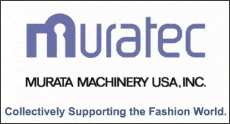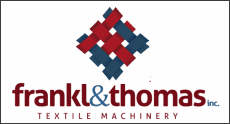
Posted November 9, 2017
By Devin Steele (DSteele@eTextileCommunications.com)
MORRISVILLE, N.C. – The retail environment is quickly moving to a B2C model as consumers continue to drive retailers, brands and manufacturers to adapt to their demands for customization and quick fulfillment.
Many pieces of the puzzle are yet to be put in place in the textile/apparel industry, but technological innovations are occurring almost at breakneck speeds and making on-demand manufacturing a reality on a broader scale. One company that has been working diligently – for a decade and a half now – to create real solutions for the industry is APJeT, Inc.
The company, based here, wasn’t founded necessarily to solve speed-to-market issues, but it serendipitously finds itself in a prime position to take advantage of today’s challenges for minimum order quantities, quick turns, personalization, customization and fast fashion. APJeT’s primary modus operandi from Day 1 has been to develop and refine a green alternative to wet textile finishing, one that requires less energy, less chemistry, less heat and no pollution or waste water.
And it has done so successfully by developing atmospheric plasma technology in a patented process capable of curing finishes on textiles, and is in proof-of-concept trials for coloring fabrics as well. The patented technology can provide to surfaces durable water repellence, antimicrobial properties, moisture management and flame resistance. This unique technology can change and enhance surface properties of a wide variety of materials, beginning with but not limited to textiles.
“It’s an exciting time because we have all the moons aligning for us right now,” said John Emrich, the former CEO and president of Guilford Mills who invested in the company and joined its ranks in 2007. “We bring the solutions that many are seeking. Everybody wanted green but they didn't want to pay for it. Well, guess what? We're giving you green, we're giving you sustainability, we're giving you a better product and, by the way, it's going to cost you less.”
And those solutions are vast, according to Emrich and his team. Using plasma in manufacturing applications has several key benefits, including: it is sustainable (no water usage, is a non-thermal process and consumes lower energy and chemicals); is aesthetic (no change in material properties and has the ability to treat heat sensitive materials); and has a much smaller footprint.
“Textile manufacturing consumes the third largest amount of water on the globe after agriculture and food manufacturing,” he said. “But with APJeT technology, no water is used. And you don't need 100-yard tenter frames.”
And the serendipitous part has occurred in recent years in the midst of a fast-changing retail landscape.
“Look at what's taken place over the last three years,” Emrich said. “All of a sudden, people want what they want and they want it tomorrow. And it’s easy on the Internet. There's a new world out there and, now, the brands are saying we have to have a Just In Time (JIT) model. Well, how do we do that? And what they really have to figure out, and what the industry is figuring out, is they're going to get back to having some in-front textile manufacturing. But it's going to be different than it was. The model is going to address how to put color on and how to put finishes on right before the fabric is cut.”
The next step in APJeT’s journey – something 15 years in the making, millions of dollars in investment and thousands of hours of development, trials, sweat, et al – is full commercialization of its equipment. And the company, which has worked with numerous companies on joint development projects, is so close to realization that Emrich said he can almost taste it.
“It's like trying to push a boulder up a hill,” he said. “We're almost to the top, and I just want to push it off the hill and get it rolling down the other side. And I think that will happen sooner rather than later. The future for APJet is bright.”
Building the company
APJeT was founded in 2002 at Los Alamos National Laboratory in Santa Fe, N.M., and, in 2008, the company created a development partnership with N.C. State’s College of Textiles, where it operated until 2015 before outgrowing that space and moving its current location in the Research Triangle Park.
After he left Guilford Mills in 2005, Emrich was approached by a representative of APJeT to take a look at the concept. He was so impressed with the promise of the technology that he invested in the company and became its chief executive. He then moved the company to North Carolina.
But he needed someone with a technical and R&D background to help take the company to the next level, so he looked no further than Guilford’s former director of sales and marketing, Martha A. Miller, now vice president of business development for APJeT. Miller had a wealth of experience in many facets of the textile industry, including business development, quality control, product development and more, and a B.S. degree in Textiles from N.C. State, to boot. Plus, she had interacted with many brands and apparel manufacturers over the years.
Emrich then began to add highly educated staff to accelerate development, including in 2009 the hiring of Dr. Carrie Cornelius as lead plasma scientist and chemical process engineer and Wade Tyner as manager of applications engineering from Milliken & Co. In 2011, Greg Roche came aboard as vice president of applications engineering and the following year, Joe Cross was added as design engineer right out of N.C. State’s College of Textiles.
And early on, the company partnered with Jay White (now a company investor and board member), president of Morrison Textile Machinery, Fort Lawn, S.C., to help develop and build APJeT’s equipment.
The company set up a pilot operation in the lab at N.C. State’s College of Textiles and developed a beta production machine. In the meantime, Emrich began to seek investors and found Steven Chrust (now APJeT’s board chairman), founder and president of SGC Advisory Sciences, Inc. and managing partner of Centripetal Capital Partners, a private equity investment firm. The company also partnered with Matheson Tri-Gas to provide industrial gases such as helium.
Between early 2012 and 2016, the company redeveloped the technology and had a big “a-ha moment,” Emrich said.
“With the redevelopment, we became the only company in the world that has created an atmospheric, low-temperature, high-density plasma,” he said. “We found the secret to control it. And we have patented all of that. We have equipment patents, we have process patents and we have the ‘Coca-Cola formula’ that we don't tell anybody about. That really propelled us. And then we had the challenge of figuring out how do we apply these chemistries because basically what happens is we apply a monomer chemistry and our plasma initiates a chemical reaction where it polymerizes, creates a covalent bond with the fabric, and it's instantaneous.
“So we had to go through the learning curve with that because our technology is so new and disruptive,” he added.
During that period of redevelopment, the engineering and applications team created a new electrode design, a breakthrough that enabled processing speeds to go from three yards to 20 yards per minute, Roche said.
“It was a drastic improvement,” Roche said. “The electrode design was sufficiently different, so it went from non-feasible to feasible. It was big.”
The next step: Applying color
With APJeT’s patented finishing technology, chemistry is applied outside of the plasma, and the chemistry will react only on the fabric, not on other hardware, according to Tyner. This allows for a wide range of chemical finishes. In the machine, an electrode projects the plasma to the fabric and a durable finish is formed on the fabric. Process speeds range from 15 to 30 yards per minute, and the process gas is recycled.
APJeT’s plasma color finishing is under development, and the initial proof of concept has been proven, Miller said. And the same dyes can be used for multiple fabric types such as cotton, polyester and nylon, she added.
“We actually developed and created a new dye class and have applied for a patent for our method of coloring substrates using atmospheric plasma polymerization,” she said. “So, with what we have developed, we don't have to use multiple dye classes for different fiber types. We don't have to have a reactive dye, an acid dye, a cationic dye. And it’s not really dyeing exactly, it’s applying color in a dry environment onto different types of fabrics with the same dye class.”
Emrich added: “And the costs of traditional dyeing are tremendous, as is the water usage.”
For that reason, brands are indeed looking for alternatives to traditional dyeing and finishing methods, he said.
“If APJeT can put color on with the same method that we put other finishes on, holy smoke,” Emrich said. “And I'll tell you, those brands that sign up with us first are going to be first in line with us on the color side because that really is the game changer.”
As re-shoring of the Americas continues, textile manufacturing will be bigger than many think, he added.
“I envision there will be people putting up knitting and weaving plants to support this, and APJeT brings the solution to it,” he said. “People may think I'm nuts, but I think the industry will be connected again. It's going to be connected differently, but connected.”
Another benefit to APJeT’s technology is better control of SKUs and inventory, Miller said.
“If we wanted to put color on, say 10 yards or 15 yards, no problem, as opposed to having to do 500-pound lots, and you're stuck with that inventory on the shelf,” she said. “Truly, these companies have the PFP (prepared for print) on the shelf, pull out the roll, key up the machine and apply the color. It’s very customized. They can run the 5 to 10 yards of that fabric and then, if desired, apply the soil and oil repellency and antimicrobial finish as well. And they won't have that 500 or 5,000 yards laying around on the shelves that nobody else wants. So that's been something that's very appealing to a lot of people we work with.”
‘Enabling technology’
Though the technology has not yet reached the commercial stage, the work this small team at APJeT is doing to disrupt the industry is gratifying, Roche said.
“Even though there were delays, customers keep coming back because their problems keep getting worse,” he said. “Water scarcity is becoming worse and worse. And we've come up with a solution that they want. We had a gentleman from Thailand visit and was extremely impressed with the no-water aspect. He said, ‘do you know what that means? I can put a plant in the U.S.’ That is so cool. So it's enabling technology, which is exciting. I think it's worth doing, something that we can look back on and say, ‘hey, we made this happen.’ ”
After a long and arduous journey, Emrich added that he sees light at the end of the tunnel.
“Before I finish (and retire), I would like to cross the finish line with at least a couple of units in the marketplace. It's our time.”
APJeT set for takeoff
After years of development, green, clean, high-tech company has many answers changing industry seeks
 |
|---|
 |
 |
 |
 |
 |
 |












